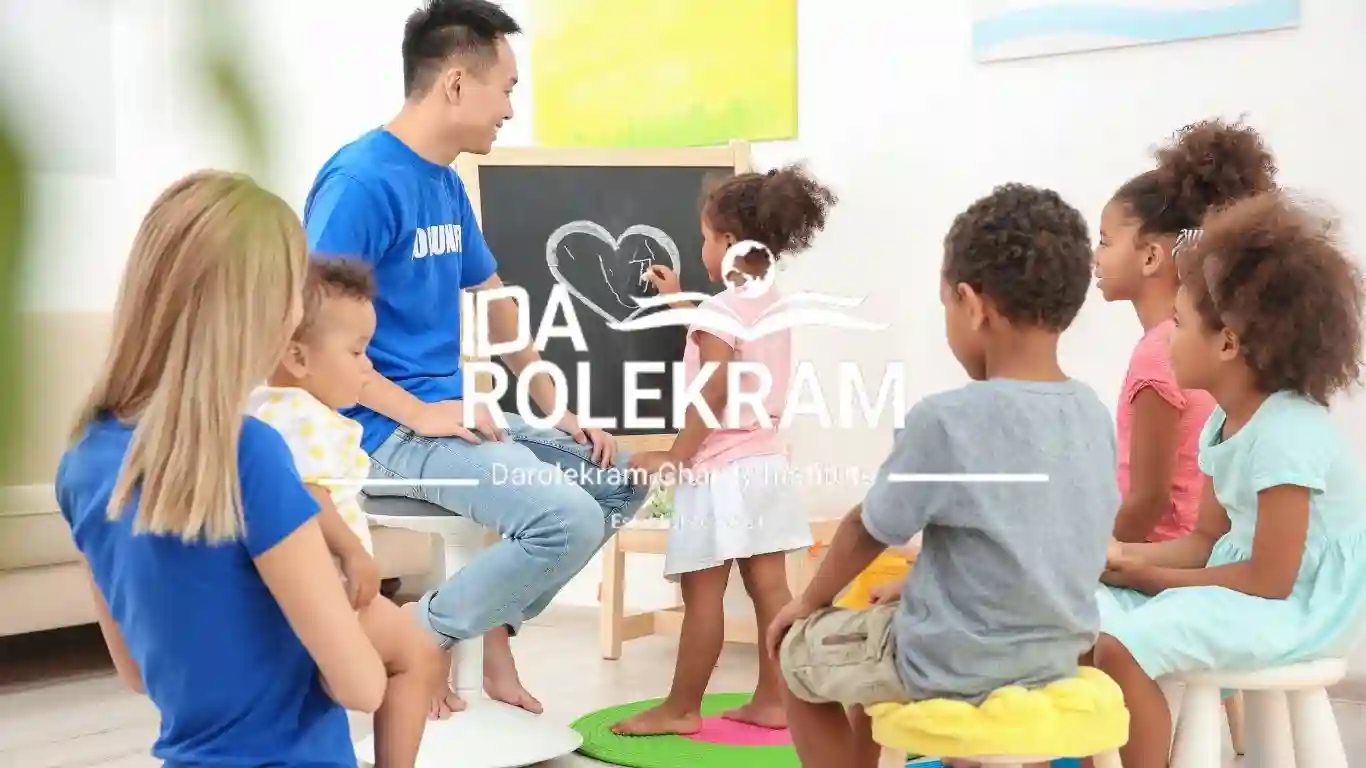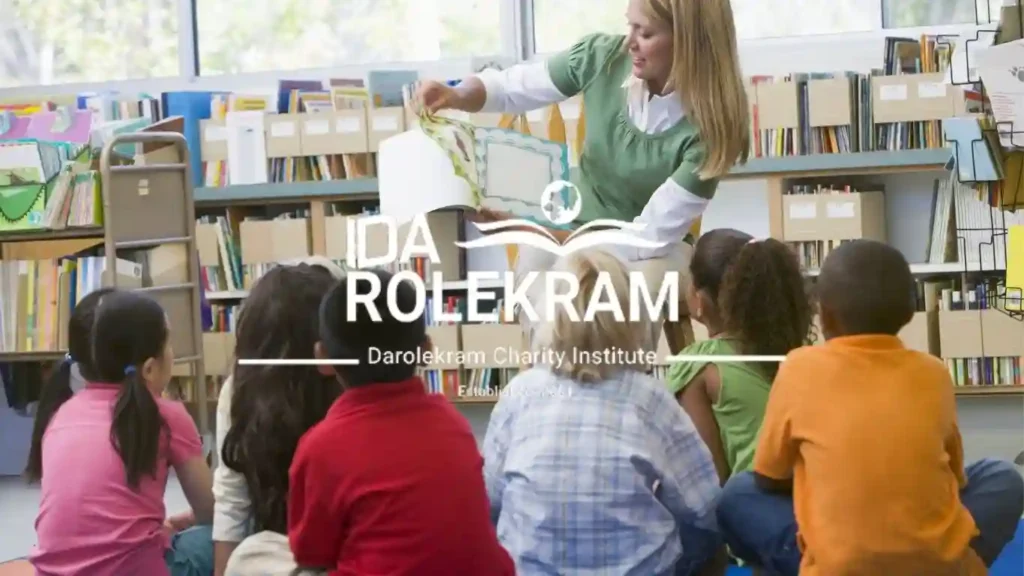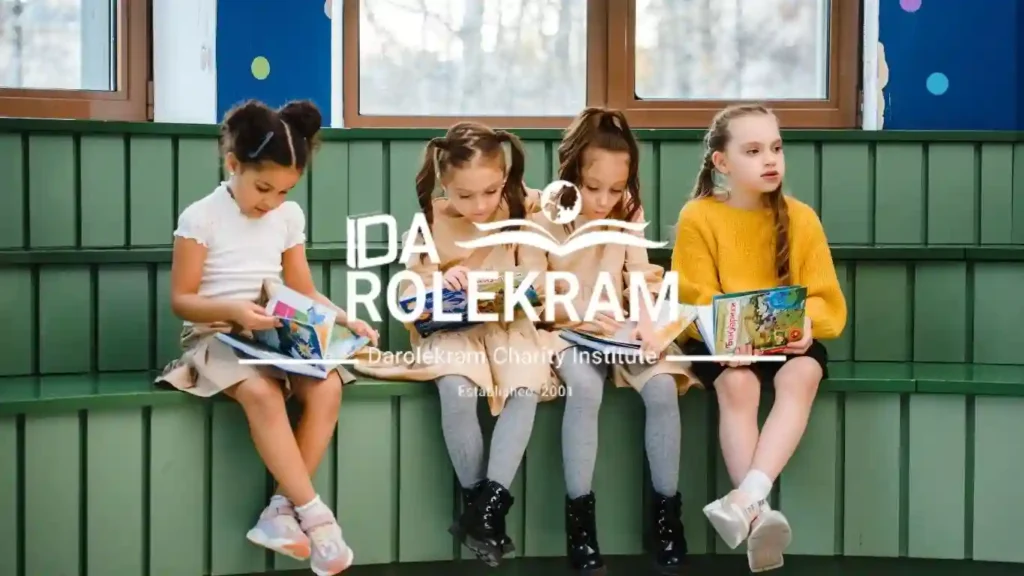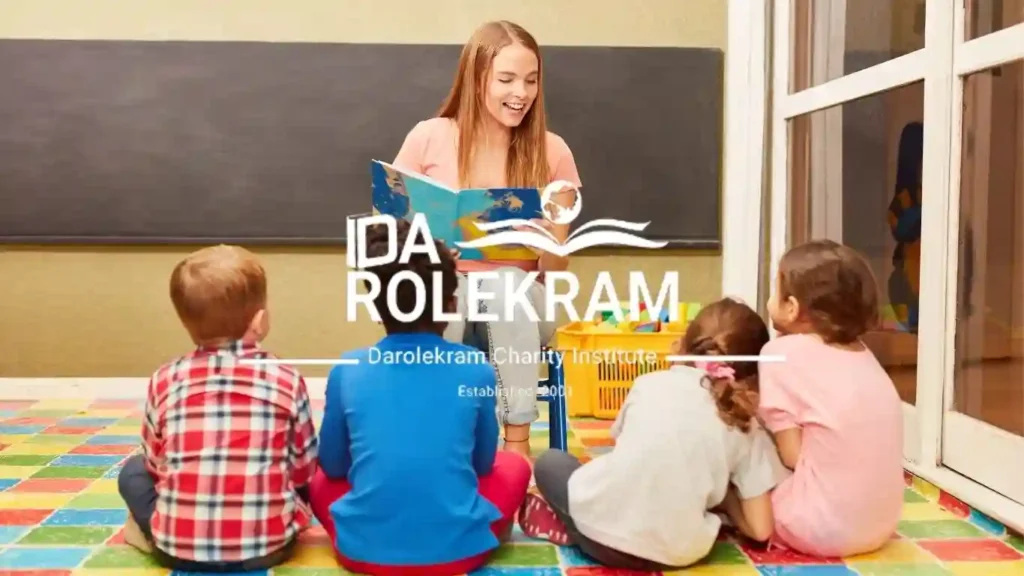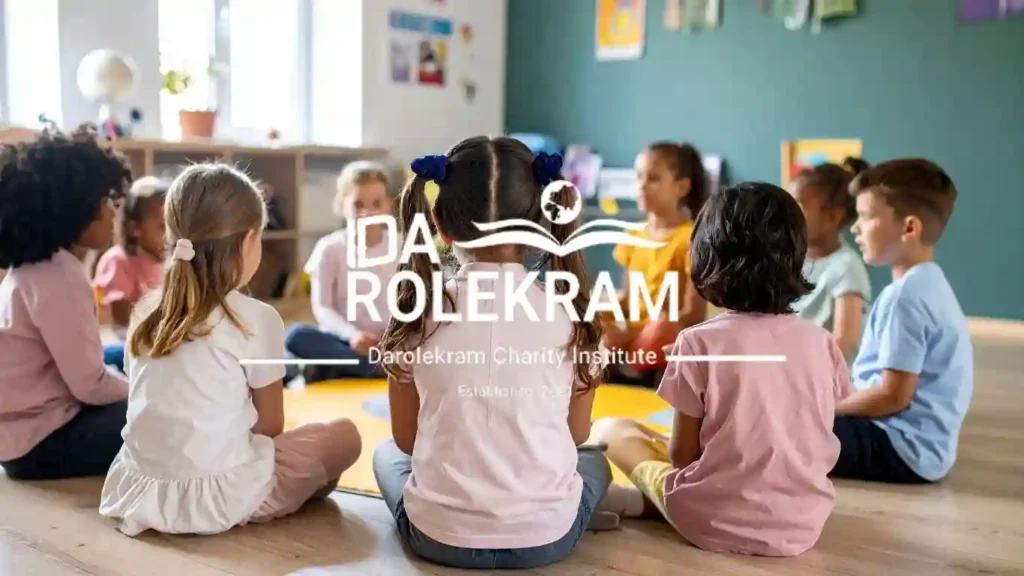Contributing to education initiatives in Iran requires understanding the rich tapestry of charitable giving and related principles of institutional accountability and cultural implications that inform effective philanthropy in the region. This guide will provide a detailed overview necessary for effective education donations and the fundamental principles needed to build a successful education giving strategy, including how to identify and screen organizations, and how you may participate in an ongoing, sustainable way.
We will discuss the regulatory environment that governs educational charities the donor-grantee relationship regarding transparency and accountability, and the importance of cultural sensitivity in cross-border philanthropy and giving.
This article aims to streamline the donation process for prospective donors and outline strategies to maximize educational impact. It covers everything from initial research and du – diligence to ongoing engagement that creates optimal educational outcomes
We will highlight examples of education support models and how established institutions can play important roles in facilitating effective giving, as well as some innovative ways to engage donors and continuing to be involved in ways that maximize positive, meaningful and sustainable change in the futures of Iranian education and the lives of Iranian students and families as stewards of charitable dollars.
By analyzing case studies of successful educational philanthropy and institutional best practices, the report shares what is actionable for donors who are dedicated to contributing to education equity and opportunity in Iran, and who want to do so with the highest standards of accountability and cultural respect.
Step-by-Step: How to Donate for Education Projects in Iran
Step 1 – Define Your Impact
Before you donate, take a moment to decide what kind of difference you want to make. Some education projects focus on keeping children in school, others on providing scholarships, digital tools, or even mentorship.
Ask yourself:
Do I want to fund short-term needs (like books or laptops) or long-term scholarships?
Am I comfortable with a monthly commitment, or would I prefer a one-time gift?
Do I want to support a specific city or group of students (e.g., girls in rural areas)?
By defining your impact, you align your values with the right project and ensure your donation goes where it matters most.
Step 2 – Research Transparent and Trustworthy NGOs
Not all organizations are the same. To make sure your donation is used effectively, look for NGOs and charities that publish annual reports, audited financials, and measurable outcomes.
A reliable education project should show:
The number of students enrolled or supported
Dropout prevention results
Details on how each dollar is allocated
Updates or stories from students benefiting from the program
Transparency is not optional — it’s the foundation of effective giving.
Step 3 – Choose a Safe and Legal Donation Method
If you’re donating from inside Iran, most NGOs provide bank transfer or local payment options. International donors should take extra care:
Always use secure, encrypted payment gateways.
Confirm that the NGO accepts international contributions legally.
Keep receipts and transaction IDs for accountability.
A safe donation process protects both the donor and the students who rely on that funding.
Step 4 – Decide Between One-Time or Long-Term Support
Both methods have value, but they work differently:
One-time donations are ideal for urgent needs like buying school supplies, laptops, or covering tuition fees for a semester.
Recurring monthly donations create stability. They allow a student to rely on consistent funding throughout the school year — the best way to prevent dropouts.
Think of long-term support as planting a seed: it grows steadily and provides a much stronger impact over time.
The Darolekram Foundation: A Model for Sustainable Educational Impact
The Darolekram Foundation is a model of institutional excellence in Iranian educational philanthropy, clearly showing how principled leadership, transparency and integrity in operations, and programming with full accountability to donors and communities, can provide sustainable educational impact. As a non-denominational, cross-factional organization, Darolekram has developed operational strategies that are mindful of cultural values while achieving measurable educational results.
As noted in our introduction, Darolekram has developed a comprehensive support model for underprivileged students and families. This includes the immediate financial support they offer but also accounts for the academic, psychological, social and cultural challenges that improve educational outcomes. They recognize that sustainable educational improvement involves addressing the student and family’s barriers to academic success and educational access. This ranges from their basic needs and family stability to their academic preparedness and future planning.
For donors looking for educationally effective models, Darolekram’s twenty-year history of practicing transparency and integrity in its operations and the delivery of measurable impact might create a level of confidence that charitable donations will engender meaningful opportunities for vulnerable students. Their dignity-preserving service delivery and demonstration of comprehensive accountability towards their stakeholders illustrates how any institutional excellence enhances program effectiveness and gives the donor confidence.
In conclusion, if you are interested in supporting educationally effective and impactful charitable models that are sustainable for Iranian students, we encourage you to consider partnership with established organizations that demonstrate consistency and ongoing commitment to educational excellence and dedication to transparent operations.
Beyond Money: Creative Ways to Support Education
Not everyone can make a financial contribution, but that doesn’t mean you can’t help. Supporting education in Iran goes beyond bank transfers — sometimes your time, skills, or resources can have just as much impact as money.
1. Volunteer as a Mentor or Tutor
Education isn’t only about textbooks. Many students need encouragement, guidance, and someone to believe in them. If you have teaching skills, language expertise, or professional knowledge, you can volunteer online as a tutor or mentor. A few hours each month can boost a student’s confidence and academic performance.
2. Donate Books, Laptops, and Digital Tools
In today’s world, access to technology is as important as access to classrooms. Many underprivileged students in Iran struggle with remote learning because they don’t have laptops, tablets, or stable internet. Donating digital devices, used but functional laptops, or even covering internet access can make a huge difference in a student’s ability to learn.
3. Share Knowledge and Professional Expertise
If you’re a lawyer, psychologist, or career advisor, your professional skills are valuable. NGOs often look for experts who can provide workshops, career counseling, or emotional support for students. These services prepare children not just for school, but for life beyond the classroom.
4. Raise Awareness in Your Community
Even if you can’t give money or time, you can spread the word. Talk about educational charities in Iran, share posts on social media, or organize awareness campaigns in your local community. Awareness leads to action, and your voice might inspire others to donate or volunteer.
The Future of Giving: Smarter Donations, Stronger Education
Donating to education projects in Iran is evolving. As technology, transparency, and global awareness improve, giving is no longer just about writing a check — it’s about strategic, impactful support.
How Technology Is Changing Charitable Giving
Digital platforms now make it easier than ever to connect donors with students. From mobile apps that track scholarship progress to blockchain-based systems that ensure financial transparency, the future of donations is digital, fast, and traceable.
Why Sustainable, Long-Term Aid Works Best
Quick fixes are helpful, but sustainable education requires long-term commitment. Recurring donations, mentorship programs, and skill-building workshops create stronger foundations for children. The future of giving in Iran is about consistency — helping students not just survive one semester, but thrive for an entire lifetime.
Building a Culture of Global Solidarity
Education is not a local issue; it’s a global responsibility. By supporting children in Tehran or other parts of Iran, donors around the world invest in the next generation of thinkers, leaders, and innovators. Smarter giving is about creating a culture where every child, regardless of background, has a fair chance to learn.
Understanding the Educational Landscape in Iran
Iran’s educational system offers both particular opportunities and challenges for philanthropy, in which the philanthropist must be cognizant of both the immediate needs of the student population who are vulnerable to education and the broader social and economic contexts that impact educational outcomes. The commitment to education in Iran is reflected in its high literacy rates and extensive educational infrastructure, however there remain significant gaps when it comes to quality education that is beneficial to all socio-economic classes and geographies.
The educational needs in Iran are most acute for economically disadvantaged families face prohibitively high education costs. When children from these families do access education, they often either drop out entirely or receive lower-quality education than their peers. The same slippage occurs as it relates to other forms of socioeconomic disadvantage, including urban-rural differences, and regional economic disparities, as well as the intersection of family supports and access for educational inequality, which exists in developing settings around the globe.
One example is Darolekram, which is dedicated to overcoming educational inequalities through integrated programmatic support, which understands the complexities of educational disadvantage. It is true that Darolekram has had a shared experience working with such a large group under such diverse and challenging variations, and being in more than twenty branches across Iran shows how with continuing institutional commitment, you can help build more impactful opportunities to address educational disadvantage with vulnerable communities, as well as holding yourselves accountable to donors and communities involved.
Identifying Educational Priorities and Needs
Successful education philanthropy in Iran must include an understanding of the specific challenges faced by distinct student populations, and the types of interventions that are most effective in overcoming them. Within education, students’ primary needs consist of financial support for education-related costs, academic support services, counseling and guidance services, and family engagement initiatives that respond to the larger social and economic context in which students operate.
The most urgent educational needs often involve students who are at-risk for dropping out, perhaps due to many burdens, including financial pressure, family limitations, or academic struggles that build on each other if efforts are not made. Students who are at-risk for dropping out often require holistic support that addresses their immediate financial needs associated with education, as well as their academic, social, and emotional conditions that may inhibit perseverance and goals in education.
Comprehending educational priorities allows donors to effectively distinguish between organizations and programs that address root causes rather than symptoms which creates sustainable impact that extends beyond individual beneficiaries to benefit families, communities, and society as a whole,.
Cultural and Social Considerations for International Donors
International donors seeking to support Iranian educational initiatives must be sensitive to cultural considerations, formal legal obligations, and informal realities that can affect the effectiveness and appropriateness of their charitable gifts. Understanding Iranian culture and the socio-cultural values associated with education, family and community responsibility, and charitable giving provides fundamental context to guide culturally appropriate giving practices.
Cultural competence for Iranian philanthropic educational giving entails respecting traditional values while supporting innovative strategies for educational improvement, understanding the function of family and community in educational choices, and understanding that educational beneficiaries maintain dignity throughout the charitable process .
Finally, effective international giving requires understanding the legal and practical mechanisms for supporting Iranian educational causes, including the role of established charitable organizations, supporting or maintaining transparent financial dealings, and being aware of legal frameworks regulating charitable acts and transnational financial transfers.
Evaluating Educational Organizations and Programs
In considering charitable giving, donors need to take a sophisticated approach to assess the possible recipient organization, its programs, its demonstrated financial management, and its impact in creating meaningful educational change. Assessment should take into consideration organizational governance, program design, outcomes for beneficiaries, and input from stakeholders to determine which organizations are deserving of a charitable gift.
Assessment includes quantitative information such as student achievement data, retention rates and cost data, but it also includes qualitative data such as beneficiary satisfaction, constituent satisfaction, and organizational work culture. Credible educational organizations provide credible quantitative and qualitative information about how they work. They invite questions from donors, invite donors for site visits, and will keep donors consistently updated about the progress and challenges of programming.
One of the few organizations to demonstrate institutional quality in educational programming is Darolekram. It has done this by establishing transparency, service delivery that preserves dignity, and it is measuring its outcome. This organization has been in operation for over twenty years and served more than eleven thousand students. Its example shows how principled leadership, and comprehensive programming can have quality educational impact over the long-term while maintaining accountability to donors and communities.
Due Diligence and Organizational Assessment
When doing thorough due diligence, one looks at organization governance, organizational financial management, program effectiveness, and organizational credibility, in order to finalize one’s intentions to commit to giving as a charitable or philanthropic donor entity. Consequently, this thorough process of doing due diligence will entail examining organization governance documents and program staff including and specifically their official capacities dealing with the population being benefitted, how and when possible conducting an assessment of independent evaluations, and gaining as much knowledge of the transparency and accountability undertaken by the organization being considered.
When undertaking a financial due diligence process, you should specify the extent of use of funds by charity, the approximate percentage of charity donations as direct beneficiaries achieving to reach an intended recipient, and how the organization costs out and measures and includes success and impact in its reporting. The most credible organizations provide the most detail in their financial statements, employ independent auditors, demonstrate the relationship to your contribution as a donor and the resulting impact of the program on desired outcomes.
The organizational assessment should also include an examination of the organizational culture (i.e. human resources), the qualifications and backgrounds of staff employed; the systems that organizations have developed to elicit beneficiary feedback, and how the organization embraces improvement and adaption through learning, and changing community needs. With this comparatively broad range of data, you can assess the sustainability and overall effectiveness of an organization far more than gleaned from simple financial assays.
Program Effectiveness and Impact Measurement
Evaluating the impact of a program includes some immediate success indicators such as scholastic progress and student retention, but ultimately longer-term outcomes such as levels of educational attainment, outcomes related to career success, and levels of community contribution. The best educational programs articulate a theory of change that shows how they – the educational programs – are connected to the desired outcomes through logical pathways which are evidence informed.
Impact measurement in educational philanthropy often encompasses achievement in educational programming, development of social/emotional skills through educational programming, stabilization of family through educational programming, and development of community capacity as a result of educational programming. The very best organizations utilize a variety of measurement strategies using quantifiable data collection, qualitative by seeking feedback from beneficiaries and ongoing or longitudinal tracking of the full scope of their intended impact over time.
The best organizations provide well-documented evidence on an ongoing basis and that includes not just statistics showing effectiveness of programs, but also reporting that includes stories showing the human impact of a charitable investment. Organizations that provide regular reports using an array of impact communications prospects allow donors at a minimum to receive and understand how their philanthropic contributory investment has manifested in ways both by scope and depth, while acting in good ethical standing to protect the unique Association’s, and the donor’s, beneficiaries dignity and privacy.
Donation Methods and Best Practices
To effectively support Iranian educational causes, one must understand the various ways to give charitably, the pros and cons of the different ways of donating, and practises to make sure the donations reach the targeted beneficiaries both efficiently and effectively. This can relate to practical considerations and strategic ways for maximizing philanthropic potential.
Charitable giving options vary in terms of efficient donations, cost, transparency, and the level of donor engagement with the recipient. With a clear understanding of these differences, donors can choose options to match their goals, risk tolerance, and engagement in the charitable process.
The best donation options account for efficient transfer of resources, and an opportunity for accountability mechanisms to allow donors to see where their donations are going, while maintaining recipient and beneficiary autonomy and dignity.
Direct Institutional Giving
Direct giving to pre-existing educational institutions is one of the best means of supporting Iranian education causes. Donors are able to utilize institutional knowledge, existing program structures, and patient histories of success. Donors commonly find and partner with institutions that have reputation, governance, and processes in place to utilize donation funds properly.
There are benefits to offering direct giving such as the large reduction in administrative overhead costs, organizational accountability, and enabling institutions to support larger, more holistic programs that address all dimensions of educational need together. Existing institutions are able to provide donors with accurate financial reports on how their funds are spent, program and project outcomes, and long term impact reports that enhance donor’s understanding of their contributions.
As a general rule, the best direct giving situations provide the opportunity for an ongoing dialogue between donors and institutional organizations that strictly give, periodic reporting on organizational status and overall success/challenges, and opportunities for donors to see and meet the communities and students they support while being mindful of boundaries and being sensitive to the importance of privacy of the beneficiaries.
Supporting Capacity Building and Institutional Development
Donors can also support funding for capacity building beyond funding for direct programs that support effectiveness, increase organizational reach, and develop sustainable educational programs. These capacity building investments, ultimately, produce a robust return on investment in terms of organizational performance and capacity/service delivery.
Capacity building support includes funding for staff training/professional development, technology infrastructures, program evaluation infrastructures, and organizational strategic planning/improvement that can advance an organization’s effectiveness. Those types of investments express an understanding on behalf of the donor that institutional strength matters in the pursuit of sustainable social impact.
Institutional support for development is inherently about thinking long-term, and indicates a willingness to plan for apparent development improvement. The benefit of capacity building investments are usually not intended to be revealed immediately; the expected effect is often connected to improved quality of educational programs, improved service delivery capacity, or more sustained organizational service delivery capacity especially with respect to managing funding. Nevertheless, these investments usually have a multiplier effect, and always have benefits for many beneficiaries for many years.
Conclusion
For educational philanthropy in Iran to be effective, it must integrate cultural sensitivity with analytical rigor, institutional knowledge with critical thinking, and immediate impact with sustainable development. The most effective educational philanthropy acknowledges that tangible impact ultimately requires addressing complicated social problems through evidence-based action by credible organizations and institutions with clear track records.
The experience of established organizations shows that top-quality educational programs come from rigorous institutional capacity building, transparent accountability, cultural sensitivity in regards to beneficiary dignity and the creation of human and social capital that has measurable impact. These institutional characteristics allow funders to create donor confidence and community trust as well as sustained outcomes for communities that go beyond restricted funding cycles.
Looking ahead, it is clear that educational philanthropy in Iran is developing toward new modes of funding based around strategic, evidence-based thinking, embraced collaborative decision making, accountability and sustainability. Knowing and supporting organizations that are able to embrace these trends will enable donors to maximize their philanthropic efficacy, while supporting broader educational development for the benefit of individuals, families, and communities across Iran.
Educational giving is ultimately measured not merely by the resources contributed but by the sustainable positive influence on the lives of students, their families and communities. Through meaningful donor relationships, institutional excellence, and continuous commitment to educational equity, philanthropic giving can be an effective driver of educational opportunity and social development to encourage brighter futures for Iranian children from all backgrounds and situations.
Frequently Asked Questions
1. Is it legal for me to donate to Irnaian educational organizations from outside the country?
Yes, but you must use authorized channels and reliable institutions like Darolekram that have appropriate licensed. You will need to verify appropriate legal status of an organization before donating, and you should never send financial transfer directly. Consult with legal professionals familiar with the regulation of international charity giving.
2. What is the minimum amount I need to support Iranian educational projects?
Minimum donation amounts vary from organization to organization. As a general rule of thumb, most organizations will accept small donations and have tiered giving options. Contact the organization for the appropriate minimums and donation tier options for specific educational support.
3. How can I be sure my donation will reach the beneficiaries?
Choose organizations that have documented policies for financial reporting, independent auditing and impact assessment. Understand how much reporting they do, how accessible that reporting is, if you can visit the organization and if they have a track record for completing the mission. For example, proper documentation of every level of accountability and donor reporting is part of what an established organization like Darolekram can offer donor accountability.
4. Can I sponsor a specific student or educational program directly?
Many organizations offer direct sponsorship programs where you can support individual students or specific educational initiatives. This provides more personal connection and detailed updates on impact. Contact the organization to learn about their sponsorship options and reporting procedures.
5. What tax benefits are available for donations to Iranian educational causes?
Tax deductibility depends on your country of residence and the legal status of the receiving organization. Some established institutions have partnerships with recognized charities in donor countries. Consult with a tax professional to understand available deductions and proper documentation requirements for international charitable giving.
6. What is the best way to donate for education projects in Iran?
The best approach is to support transparent NGOs that publish clear impact reports and offer long-term programs such as scholarships and mentorship.
7. Which charities are most trusted for supporting education in Iran?
Several local NGOs and community organizations focus on education. Look for those with audited reports, student success stories, and international recognition.
8. How can international donors safely contribute to education in Iran?
Use secure online platforms that comply with international regulations. Always confirm the NGO’s legal status and keep records of your transactions.
9. Are there alternatives to financial donations for education projects?
Yes. You can volunteer as a mentor, donate laptops or books, or raise awareness through social media campaigns. Non-financial contributions are often just as impactful.
10. How do I know if my donation is making a real impact?
Choose organizations that provide measurable results — such as graduation rates, enrollment numbers, and student testimonials — and request regular updates.
11. Can donations support long-term scholarships for students in Iran?
Absolutely. Many NGOs allow you to sponsor students over several years, ensuring consistent support that prevents dropouts and builds future opportunities.
12. How do education donations reduce child labor in Iran?
When families receive financial help for schooling, children are less pressured to work. This support keeps them in classrooms instead of entering the labor force too early.

